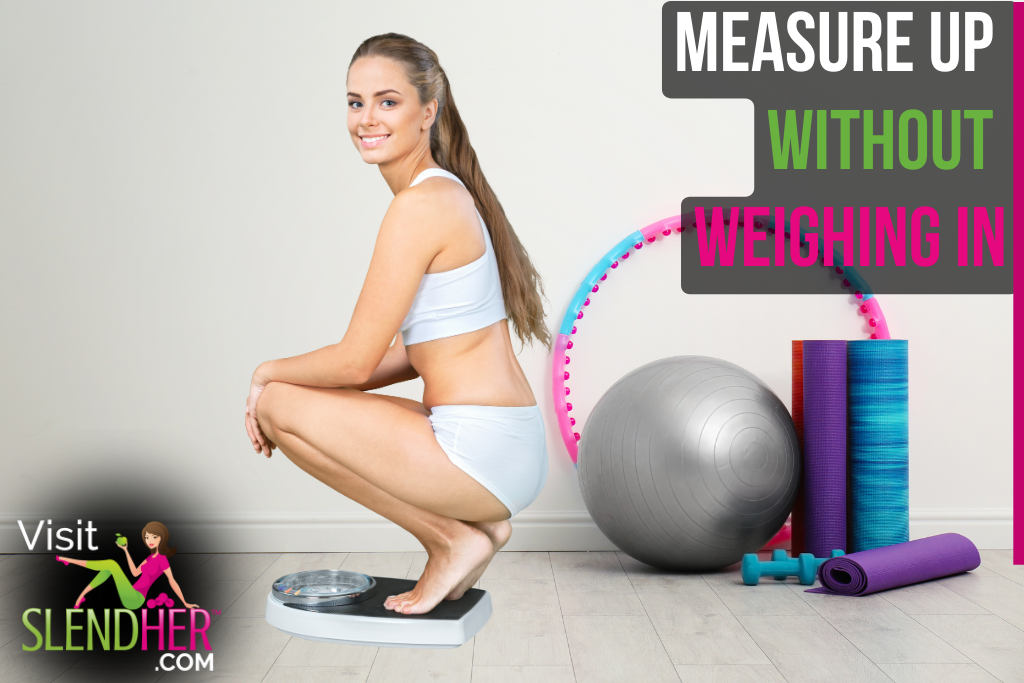
If you’re trying to lose weight, getting on a scale can be either frustrating or rewarding depending on the day. Weigh in too often–say, once a day–and it can be downright confusing. One day you’re up a pound, the next you’re down two pounds; by Friday you’re the same weight as you were on Monday. It’s enough to make you want toss the scale in the trash. And maybe you should.

Stepping on the scale can lead to inconsistent results for a variety of reasons: hormones and the time of the month can mean more water weight; development of muscle mass can show your weight plateau even as your body becomes more toned; and increased stress levels affecting cortisol and insulin level, and thus what you eat, can make a difference. Even fat reading scales can be deceiving if you weigh yourself at different times a day with different hydration levels.
Despite knowing all the discrepancies that come partnered with scales, women still look down for a number to feel good (or bad) about their progress. Well, no more! It’s time to trade in the scale for a better way to track your progress. We’ve gathered a group of weight tracking methods that will have you saying “see ya” to your scale.

If the Dress Fits: If there’s a dress–or really any item of clothing–that you want to fit into, use it as a baseline. It doesn’t matter if this is a dress from your past that you once wore or a little black dress you bought online in a smaller size. The idea is that it represents a goal. Maybe you can only fit one thigh into the dress now, but as the fat falls off, more of that dress is going to come on. Since the dress will never change (barring any alterations), it’s a great way to track your progress in a fun and stylish way.
Get Naked: “Mirror, mirror, on the wall, who’s the most tone woman of them all?” If you stand sans clothing in front of your own reflection and are not happy with what you see, you know what changes need to happen. Too much belly bulge? Wish you had thigh gap? If so, focus on burning more calories that you take in. Want to see definition in your triceps and a lift in you bum? Add more strength training to your weekly workouts. The mirror doesn’t lie, so take note of the changes that occur over time, and react accordingly.
Tech Tracking: Apps, digital sensor armbands, and bracelet pedometers have helped to move weight tracking out of the bathroom and into the 21st century. By geeking out a bit, you can watch how many calories you burn, your heart rate, and the number of steps you took throughout the day. Compare each day and you’ll have data to help you program more effective workouts and more active days in general.

Selfies: They say a picture is worth a 1,000 words, but when it comes to fat loss, no words are necessary. Before, during, and after picture make visualizing the progress (or lack there of) easier. Seeing is believing, so take some shameless selfies. You don’t have to post them to Facebook, or you can once you’re ready to reveal the big changes for which you’ve worked so hard.
Give Others Time: There’s a meme floating around the web that says, “It take four weeks to see your body changing. It takes eight weeks for your friends and family. And it takes 12 weeks for the rest of the world.” No source is cited for this, but it often seems the case that others take a little longer to notice the progress that you might see right away. That’s because no one knows your body better than you do. Believe in the results, and don’t hold out for others to validate your accomplishments. It will come. It might just take some time.
Pace Maker: Your workouts have a lot to say about the progress you’re making. Use a notebook or app to track each exercise, and in no time you’ll start to see how those numbers change. For example, maybe your mile time speeds up by a minute after a month of training. Or maybe you can squat 25 pounds more than you could six weeks ago. These milestones prove that you’re improving your health, and most likely toning your body at the same time. A pound of muscle looks a lot different on your body than does a pound of fat. A scale sees it as a pound, but you should see if as progress.
It’s easy to see that it’s time to step away from the scale. Look for more positive ways to track your progress and you’ll feel better about your results, while also being encouraged to keep up the good work.
What tips do you have for skipping the scale? Share with others in the comments!
[adform]

Leave a Reply